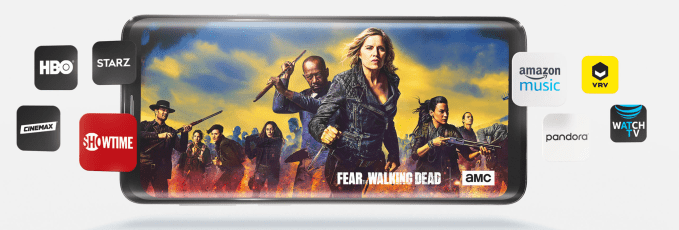AT&T’s newly announced Watch TV, a low-cost live TV streaming service announced in the wake of the AT&T / Time Warner merger, is now up and running. The company already has one over-the-top streaming service with DirecTV Now, but this one is cheaper, has some restrictions, and doesn’t include local channels or sports to keep costs down.
At $15 per month, the service undercuts the existing low-cost leader Philo by a dollar, but offers a different lineup (Fomopop has a nice channel-by-channel comparison between the two, if you’re in the market.)
Both have 25 of the same channels in their packages, including A&E, AMC, Comedy Central, Food Network, Discovery, HGTV, History and others, but AT&T Watch is missing MTV, Nickelodeon, and Travel Channel.

In total, Watch TV has over 30 live TV channels, plus 15,000+ TV shows and movies on demand, and allows you to subscribe by way of updated AT&T Wireless plans. Non-AT&T customers can subscribe for $15 per month directly.
AT&T has been monkeying around with its wireless plans to best take advantage of its Time Warner acquisition. With the new unlimited plans, it removed the previously free HBO perk and raised the entry-level plan by $5 per month, Ars Technica reported, detailing the changes that coincided with the launch of Watch TV. (Existing customers were grandfathered in to free HBO.)
Instead, wireless customers on the top-tier AT&T Unlimited & More Premium plan can choose to add on another option – like HBO – for free. Other services they can opt for instead include Showtime, Starz, Amazon Music Unlimited, Pandora Premium and VRV.
The company also quietly raised its “administrative fee” for postpaid wireless customers from $0.76 to $1.99 per month, Ars noted as well, citing BTIG Research. This will bring in $800 million of incremental service revenue per year, the analyst firm said.
Despite the price hikes and valid concerns over AT&T’s behavior, there’s likely going to be a market for this low-cost live TV service. The company’s DirecTV Now streaming service, launched in December 2016, reached 1.46 million subscribers in April. It’s catching up to longtime leader, Dish’s Sling TV, which debuted at CES back in January 2015 and now has 2.3 million subscribers. Other newer arrivals, like Hulu with Live TV and YouTube TV, have subscribers in the hundreds of thousands.
AT&T’s Watch TV service will be available across platforms, including iOS, Android, Apple TV, Chromecast and Amazon Fire TV/Fire TV Stick, according to the service’s website. However, it only streams in high-def on the Premium wireless plan. It also doesn’t offer perks common to other live TV services, like a cloud DVR or support for multiple simultaneous streams.
The Watch TV apps are rolling out now. Early reviews note there’s some similarity in the layout to DirecTV Now. There are no reports of crashing as of yet, which are common to new launches like this.
from TechCrunch https://ift.tt/2tQQdB8
via IFTTT
Comments
Post a Comment